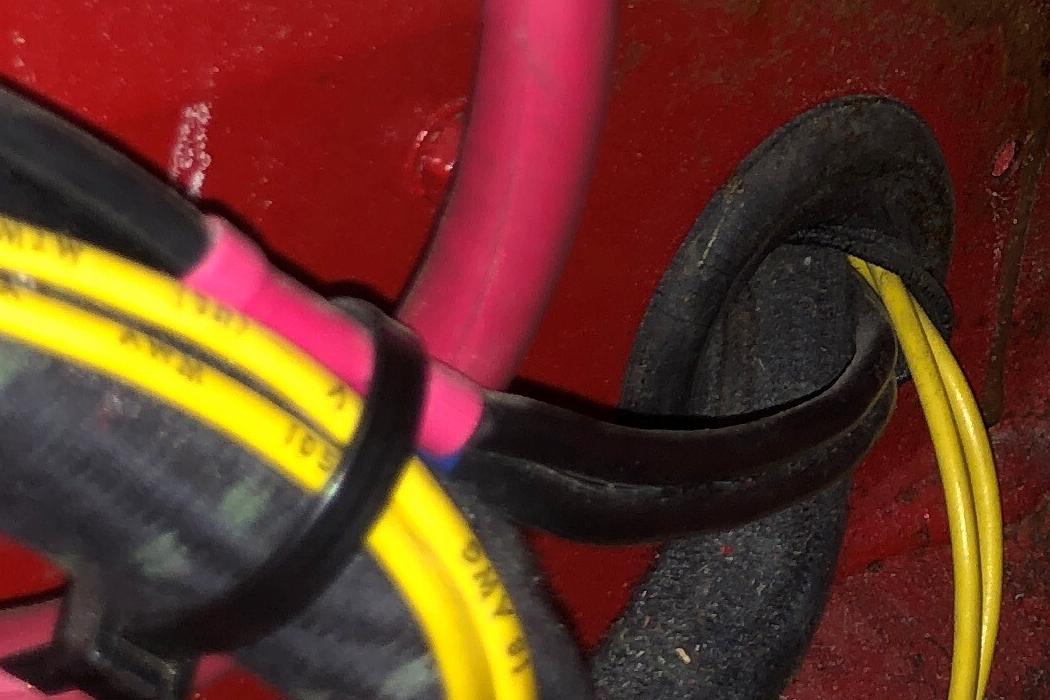Been having some intermittent starting issues - 8 times out of 10 it starts immediately, hot or cold, on the first turn like it’s a brand new car, but 1 time in 10 it will offer a single grunt but won’t turn over and another 1 time in 10 it’s stone cold dead.
My handy dandy “GOOLOO 1500A Peak SuperSafe Car Jump Starter with USB Quick Charge 3.0” (perhaps coincidentally, and after some wiggling/kicking/hitting with hammer) fired it up instantly each time so I blamed the battery and replaced it. Low and behold on the way home with the new battery installed I had the same dead-on-restart issue and this time the jump made no difference, but after wiggling everything it fired up from the battery perfectly.
I think I’ve traced it to a dodgy ground connection where it’s bolted to the firewall. It’s tight but wiggly, if that makes any sense, and the old white (now yellow) insulator part of it has started to fall apart. Wiggling it about fixes the problem, whether coincidentally or not.
First questions: is this the right replacement part? https://www.sngbarratt.com/us/#!/English/parts/ebcfb3a3-a9ca-4672-916d-2d17d2275688
Second question, born of ignorance and possessing significantly fewer brain cells than I was born with, is if the ground connection is lost while driving am I doing any damage? A quick search on the Internets manifests opinions ranging from “no, not at all” to “you’ll fry the alternator” through “you’ll fry the car” to “you’ll fry yourself”.
Of course due to my wiggling everything there’s a lot of potential inconsistency here, and it might not even be that. I’m 99% sure the battery indicator gauge has stayed in the 13+ amp range at all times, although there is a possibility it could have dropped off moments before I pulled to a stop just prior to having the issue upon attempted restart. (The battery charge indicator would drop to 0 if the ground connection were lost, wouldn’t it…?) Or it could possibly be that the car does a specific shake as the engine shuts down that sometimes breaks the connection at the firewall.
This may be a red herring but perhaps worth mentioning that the issue usually occurs when hot/warm – the car typically starts perfectly in the garage but becomes recalcitrant once I stop, usually either for gas or somewhere where I’m surrounded by admiring - and soon to laughing - members of The Great Unwashed. This isn’t 100% the case, but it does seem to be a trend.
Usual story – 100% reliable in the driveway, less so out of it and reduces exponentially with 1) increased distance, 2) proximity to the cloak of darkness and 3) rain.
If it’s OK for me to drive with a dodgy ground (?), and assuming I can’t resist doing so in the next 3 days before the new part arrives even though I risk further embarrassment, what else should I check if it happens again? So far when it’s happened I’ve usually had people standing around laughing at me so I’ve taken the hi-tech approach of wiggling everything in sight before trying again as quickly as possible, but of course a loose connection sometimes reconnects with a wiggle and sometimes it doesn’t, so next time I want to check things a little more systematically.
Thanks,
Rob.












